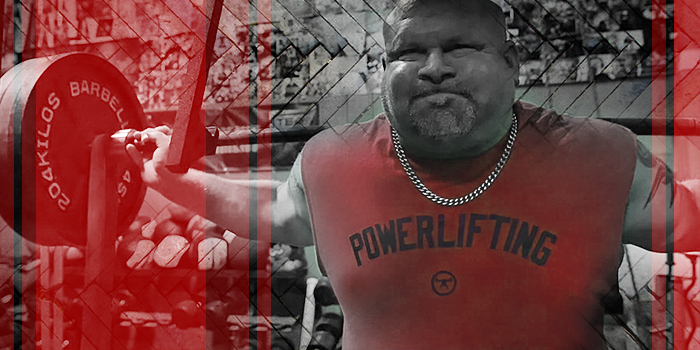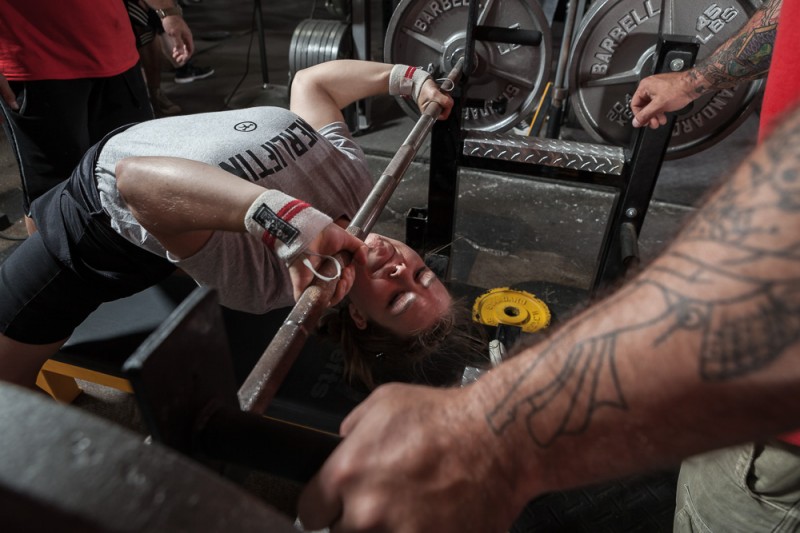
When talking to people, I try to avoid three topics: religion, politics, and training programs. Unless put on the spot and directly asked, I try to avoid these topics. So when I talk about training I try to stick to the lift itself and not the program. Regardless of what program you think works best for you, the form used to complete the lift is still the same.
My best bench equipped was 749 with a best raw bench (with a pause) of 550. I have benched 495 for seven reps close grip. I was on track to bench 800 when an unexpected neck injury forced me to change my plans. Over the years I have had to make adjustments to my form and setup with the bench as a result. I have benched both with my legs out in front using leg drive as well as tucked up under.
In the beginning, I used a double denim bench shirt in competition. The shirt would lock up and for me I had to damn near dump the weight on my chest then leg drive the fuck out of it to basically heave the weight back to a position where I could press. Later on in my competitive years, I switched to the triple Inzer Phenom bench shirt. My approach was very different with this shirt. I started tucking my feet which gave me a better arch and put me in a better position, which worked better for that shirt. It was about this time that I also started having issues with my hips. At the time I had no clue that I would eventually need both hips replaced. All I knew was that my hips were tight and it was making it hard for me to spread my legs into position to get leg drive in the bench. The thing about leg drive is that your feet should be wide for balance to keep you from rocking side to side and drive off your heels. Otherwise, the leg drive usually results in your butt coming up off the bench and red lights.
So, what is the proper way to set up a bench? Well, it all depends on what works best for you. With both styles you want to first start by pulling the shoulders back by tightening the rear delts. Then you want to pull the shoulders down by tightening the lats. Try to touch your shoulder blades to your butt. When taking a big weight I even put my feet on the bench and raise my butt so I can really get up on my traps and dig them into the bench.
Next is proper foot position. At this point a decision must be made: tuck or no tuck. From here I put one foot down first, then the other. This helps me not mess up what I have set up so far. If you tuck, try to get the feet back under you such that you are on your toes. Once setup and ready to get the handout, the entire body must be tight or flexed. Once you receive the handout begin to lower the bar by flexing the lats. Lower the bar with the lats and upper back and save the chest, triceps and shoulders for the press. As you lower the bar, try to drive the heels down, which will help with your arch and will shorten your range of bar travel. If you don’t tuck, get your feet wide and somewhat out in front such that the knee is below the hip. Dig the heels into the ground. Once again, set up and get ready to receive the handout. The entire body must be tight or flexed. Once you receive the handout, begin to lower the bar with the lats. Once you begin to press, drive the heels into the floor and drive back against the shoulders to drive the shoulders into the bench.
WATCH: Reintroducing Dynamic Effort Bench Day
The key to benching is upper back and position. Whether you tuck your feet under or put them in front, the end result must be the same.
- The shoulders should always be pulled back. If not then you are flat on the bench and it makes for a long range of motion.
- Shoulders should be pulled down. As I once heard it described, put your shoulders in your back pockets. This helps set your lats and builds your arch.
- Always lower the bar with the lats and upper back and save the chest, triceps and shoulders for the press.











